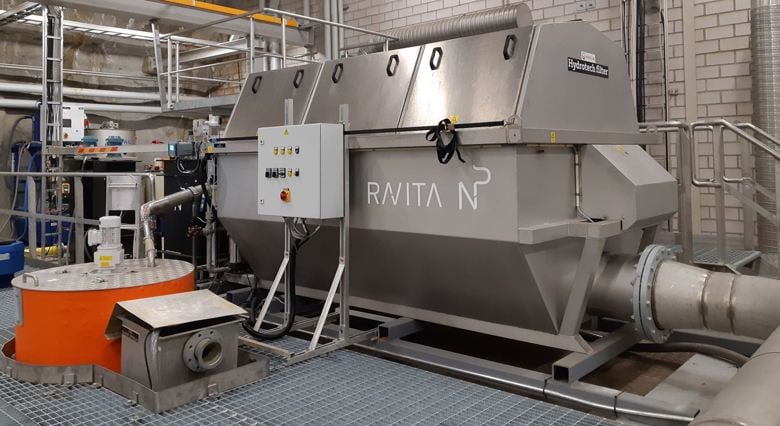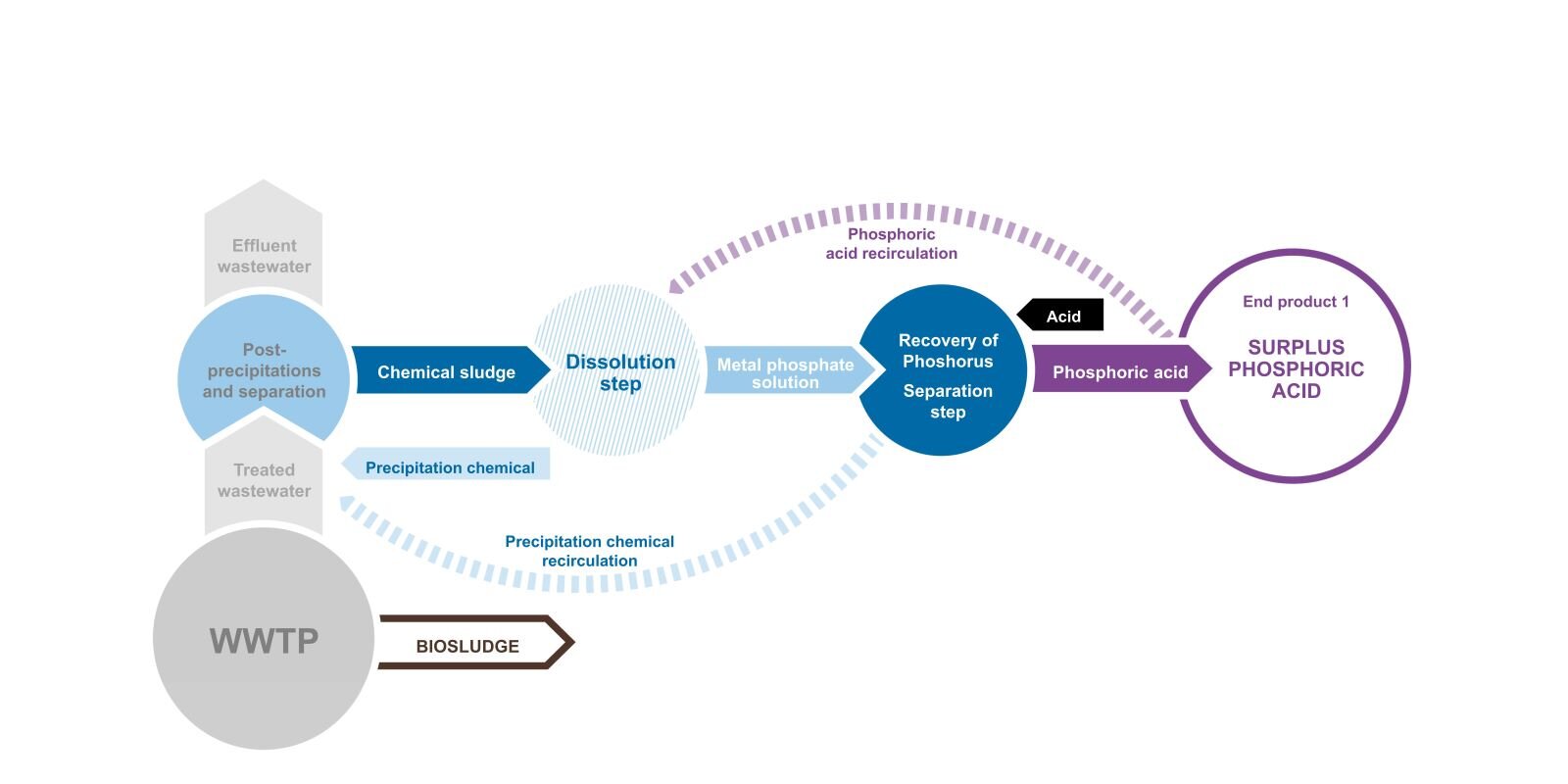Process

RAVITA process
In the RAVITA process, phosphorus is recovered directly from wastewater at the very end of the treatment process by post-precipitation. The chemical precipitate formed is dissolved using phosphoric acid, after which the phosphorus and the precipitating chemical are separated. Some of the phosphoric acid produced is recycled back to dissolution. The surplus is a product that can be used as a raw material in the fertiliser industry or in many other industrial sectors. The separated precipitating chemical is recycled back to the post-precipitation process.
Nitrogen can also be recovered in the RAVITA process. The drying of biological sludge produces reject water with a high ammoniacal nitrogen content. Nitrogen is recovered from the reject water by a stripping process that utilises recovered phosphoric acid. The end product is ammonium phosphate suitable for use as fertiliser.

Figure 1. RAVITA process diagram
RAVITA DEMO pilot plant 1,000 PE
The RAVITA DEMO pilot plant built at the Viikinmäki wastewater treatment plant is divided into three areas: chemical sludge production, sludge dissolution, and the phosphoric acid treatment process. The pilot’s population equivalent is 1,000.
The production of chemical sludge consists of three sub-stages: precipitation, disc filtration, and drying of the chemical sludge generated. Sludge production has been found to be successful, with first-stage disc filtration being able to remove almost 95% of the incoming phosphorus. At treatment plant scale, there must be two precipitation and separation stages in order to guarantee sufficiently low phosphorus concentrations in the effluent. The heavy metal concentrations in chemical sludge have been found to be very low when compared to the concentrations in sludge produced by co-precipitation and the limit values set in legislation (24/2011).
Sludge dissolution and the phosphoric acid treatment process are being optimised at pilot scale. The aim is to study the further processing of the solution into a valuable end product.